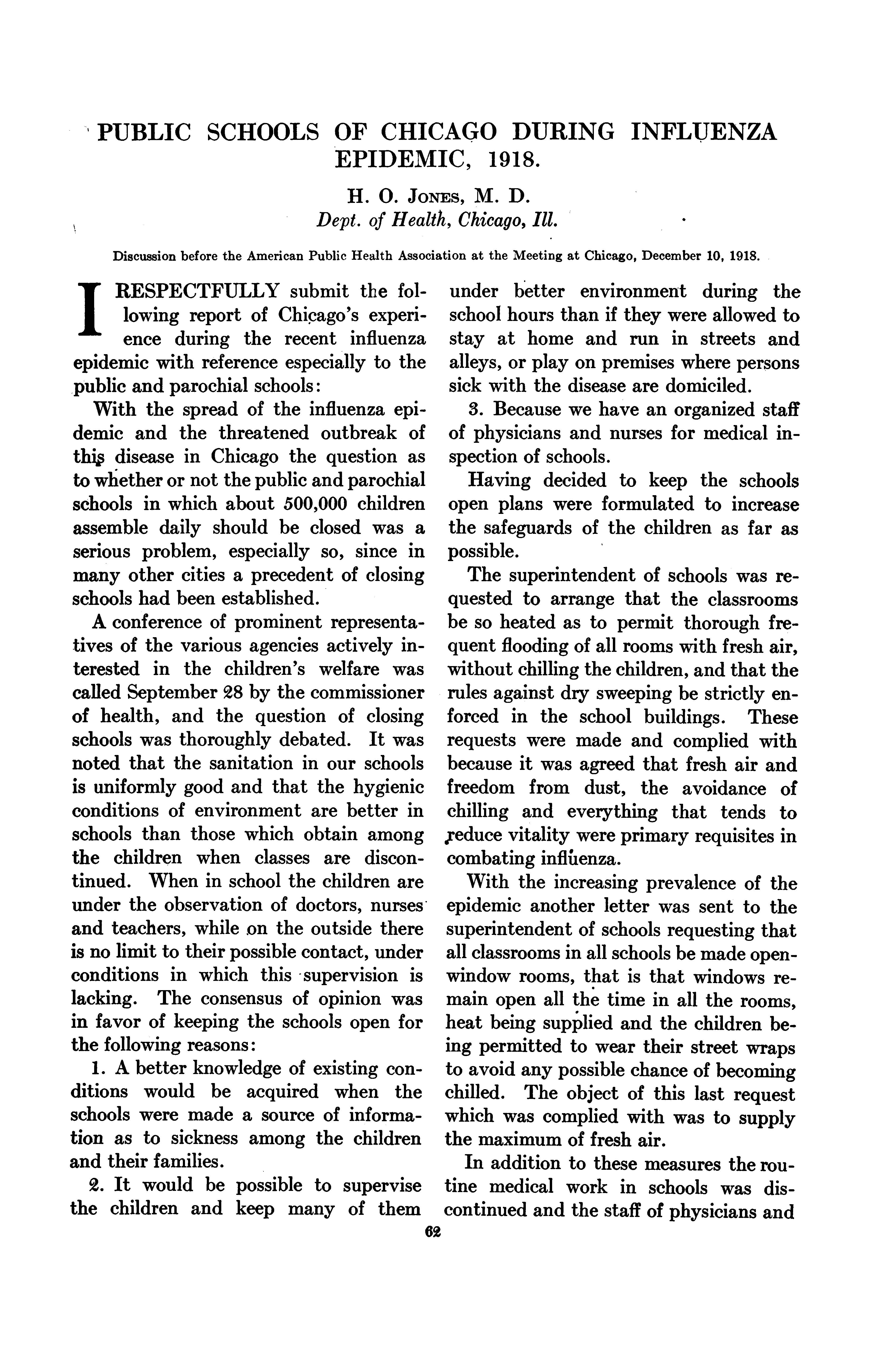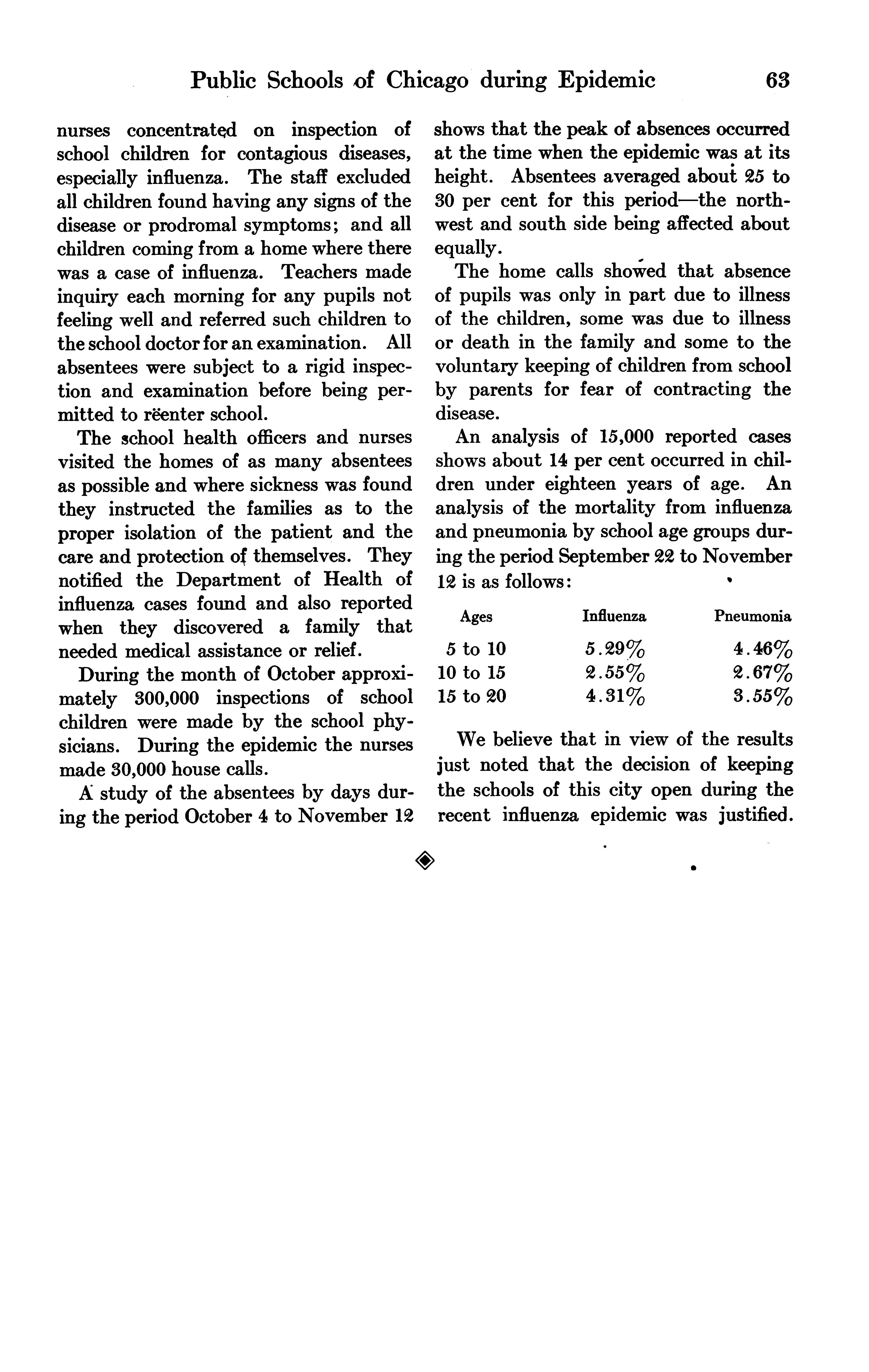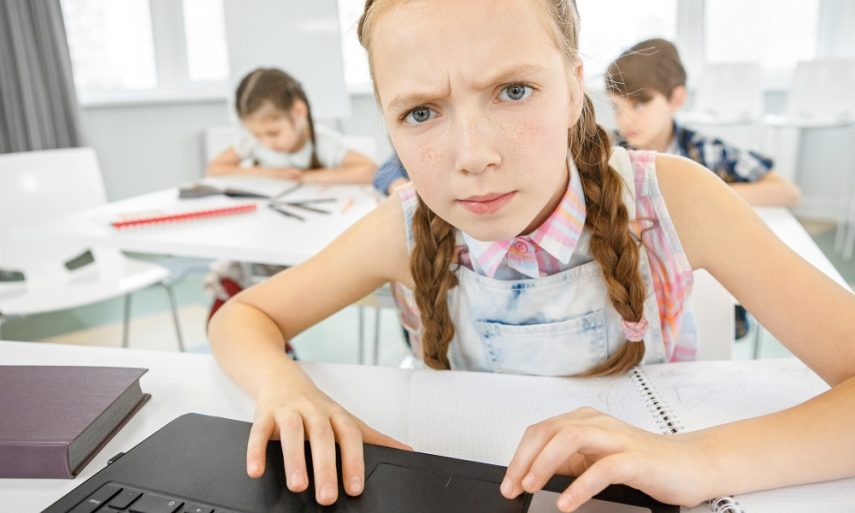Go, But Don't Go - Confusing Messaging for Chicago schools coming back from Winter Break
Chicago Public Schools will be open for school tomorrow, January 3, 2022, for students and families that want to send their children to school despite the Chicago Teachers Union demanding that schools be closed for in-personal learning and students learn remotely through the Internet.
In 1918 during the Spanish Flu Epidemic, Chicago Public Schools stayed open. The schools were kept open for the simple reason that this was the place where professionals worked, and students and families could get information and services if they were showing symptoms of the flu.
One hundred years later, the School Board has taken the same position.
In a blast email sent Sunday, January 2, 2022, at 7:18 PM, the district stated:
I understand that you may be feeling some anxiety given the recent rise in COVID-19 cases in Chicago, and I want you to know that the health and wellbeing of our staff and students remains my top priority. Research has shown that with the extraordinary protections we’ve put in place, school is one of the safest places your children can be during the pandemic.
You can increase that protection by getting your students vaccinated, as the vaccine prevents infection and helps limit severe symptoms if you do contract COVID-19. Visit cps.edu/vaccinations to make an appointment or find more information about the vaccine.
I stand firmly behind the decision to protect our student’s physical and mental health and promote their academic progress by keeping CPS schools safely open for in-person learning. While we expect that we will have to temporarily transition individual classrooms to remote instruction as needed, there are no plans to transition the entire district to remote learning.
Why Students Learn Better in Person
• Data shows that children do better academically, socially, and emotionally when they're in the classroom versus at-home learning on a computer. • Remote learning is especially hard on working families, and those children who have limited access to the Internet. • Families do better when they have certainty that their children will be in school instead of having to scramble to find childcare. In fact, informal, last-minute learning and care spaces typically have fewer COVID-19 safety protections in place than schools, so unwarranted and preemptive mass school closures may actually fuel community spread.
Chicago Teachers Union has taken the position that students should stay at home in opposition to city administrators and health officials. The Union is claiming that keeping schools open endangers staff and students. Union leaders in a Tele-Town Hall meeting at 6 pm with union members Sunday night, January 23, 2022, told members: "Don't go to school tomorrow."
In the end, will the position of the Union matter? In 1918 the decision of the city to keep schools open did not matter. Families that had the resources to keep kids home did, and those who needed the school system's resources sent their children to school.
It looks like the same political posturing from 100 years ago. Everyone is pretending to do something when they are not doing anything.
Below is a full report on the reasoning for keeping schools open in 1918 during the Spanish Flu Epidemic.
-----------------------------------------
The argument in 1918 Chicago for leaving schools open for its 500,000 students was: keeping schools open would keep the children off the streets and away from infected adults, the reasoning went.
If social distancing was helpful then, it would have been made easier by the fact that absenteeism in schools soared during the pandemic, perhaps because of what one Chicago public health official called "fluphobia" among parents.
"The absentee rate was so great, it really didn't matter" that schools were open, Markel said.
Part of Chicago's strategy was to ensure that fresh air was circulated. School rooms were overheated during the winter so that windows could remain open at all times, according to a 1918 paper by the Chicago Department of Health.
The paper concluded that an analysis of data showed that "the decision of keeping the schools of this city open during the recent influenza epidemic was justified."
-----------------
Discussion before the American Public Health Association at the Meeting at Chicago, December 10, 1918
https://ajph.aphapublications.org/doi/10.2105/AJPH.9.1.62
RESPECTFULLY submit the fol lowing report of Chi ago's experi ence during the recent influenza epidemic with reference especially to the public and parochial schools:
With the spread of the influenza epidemic and the threatened outbreak of this disease in Chicago the question as to whether or not the public and parochial schools in which about 500,000 children assemble daily should be closed was a serious problem, especially so, since in many other cities a precedent of closing schools had been established.
A conference of prominent representatives of the various agencies actively interested in the children's welfare was called September 28 by the commissioner of health, and the question of closing schools was thoroughly debated. It was noted that the sanitation in our schools is uniformly good and that the hygienic conditions of environment are better in schools than those which obtain among the children when classes are discontinued. When in school the children are under the observation of doctors, nurses· and teachers, while on the outside there is no limit to their possible contact, under conditions in which this supervision is lacking. The consensus of opinion was in favor of keeping the schools open for the following reasons:
1. A better knowledge of existing conditions would be acquired when the schools were made a source of information as to sickness among the children and their families.
2. It would be possible to supervise the children and keep many of them under better environment during the school hours than if they were allowed to stay at home and run in streets and alleys, or play on-premises where persons sick with the disease are domiciled.
3. Because we have an organized staff of physicians and nurses for medical inspection of schools.
Having decided to keep the schools open plans were formulated to increase the safeguards of the children as far as possible.
The superintendent of schools was re quested to arrange that the classrooms be so heated as to permit thorough frequent flooding of all rooms with fresh air, without chilling the children, and that the rules against dry sweeping be strictly en forced in the school buildings. These requests were made and complied with because it was agreed that fresh air and freedom from dust, the avoidance of chilling and everything that tends to 1educe vitality were primary requisites in combating influenza.
With the increasing prevalence of the epidemic another letter was sent to the superintendent of schools requesting that all classrooms in all schools be made open- window rooms, that is that windows re main open all th time in all the rooms, heat being supplied and the children be ing permitted to wear their street wraps to avoid any possible chance of becoming chilled. The object of this last request which was complied with was to supply the maximum of fresh air.
In addition to these measures the routine medical work in schools was discontinued and the staff of physicians and nurses concentrated on inspection of school children for contagious diseases, especially influenza. The staff excluded all children found having any signs of the disease or prodromal symptoms; and all children coming from a home where there was a case of influenza. Teachers made inquiry each morning for any pupils not feeling well and referred such children to the school doctor for an examination. All absentees were subject to a rigid inspection and examination before being per mitted to reenter school.
The school health officers and nurses visited the homes of as many absentees as possible and where sickness was found they instructed the families as to the proper isolation of the patient and the care and protection of themselves. They notified the Department of Health of influenza cases found and also reported when they discovered a family that needed medical assistance or relief.
During the month of October approximately 800,000 inspections of school children were made by the school physicians. During the epidemic the nurses made 80,000 house calls.
A study of the absentees by days dur ing the period October 4 to November 12 shows that the peak of absences occurred at the time when the epidemic was at its height. Absentees averaged about 25 to 80 percent for this period-the north west and south side being affected about equally.
The home calls showed that absence of pupils was only in part due to illness of the children, some was due to illness or death in the family and some to the voluntary keeping of children from school by parents for fear of contracting the disease.
An analysis of 15,000 reported cases shows about 14 percent occurred in chil dren under eighteen years of age. An analysis of the mortality from influenza and pneumonia by school age groups dur ing the period September 22 to November 12 is as follows:
Ages --- Influenza --- Pneumonia
5 to 10 --- 5.29% --- 4.46%
10 to 15 --- 2.55% --- 2.67%
15 to 20 --- 4.81% --- 8.55%
We believe that in view of the results just noted that the decision of keeping the schools of this city open during the recent influenza epidemic was justified.
-------------------------------
References
Chicago Public Schools. Blast Email. Welcoming You Back for a Safe Return on January 3rd. CPSnoreply@cps.edu Sunday January 2, 2022 at 7:18 PM
Chicago Teachers Union. Tele-Town Hall meeting. 6 pm, Sunday night, January 23, 2022, at 6 pm. 1-800-541-6165
CNN, Theresa Waldrop. “Here’s What Happened When Students Went to School during the 1918 Pandemic.” CNN, https://www.cnn.com/2020/08/19/us/schools-flu-pandemic-1918-trnd/index.html. Accessed 2 Jan. 2022
Grantz, Kyra. et al. 2016. “Disparities in Influenza Mortality and Transmission Related to Sociodemographic Factors within Chicago in the Pandemic of 1918.” Proceedings of the National Academy of Sciences 113 (48): 13839–44. https://doi.org/10.1073/pnas.1612838113
Jaffe, Eric. “Why the 1918 Flu Hit Some Cities Harder than Others.” Sidewalk Talk, 13 Mar. 2020, https://medium.com/sidewalk-talk/why-the-1918-flu-hit-some-cities-harder-than-others-497f30a2036e
Jones, H. “Public Schools of Chicago during Influenza Epidemic, 1918.” American Journal of Public Health, vol. 9, no. 1, Jan. 1919, pp. 62–63. DOI.org (Crossref), https://doi.org/10.2105/AJPH.9.1.62
Vukovic, Rebecca. “Confusion and Uncertainty in the Classroom.” Teacher Magazine, 12 Apr. 2018, https://www.teachermagazine.com/au_en/articles/confusion-and-uncertainty-in-the-classroom
 Part of Chicago's strategy was to ensure that fresh air was circulated. School rooms were overheated during the winter so that windows could remain open at all times, according to a 1918 paper by the Chicago Department of Health.
Part of Chicago's strategy was to ensure that fresh air was circulated. School rooms were overheated during the winter so that windows could remain open at all times, according to a 1918 paper by the Chicago Department of Health.
The paper concluded that an analysis of data showed that "the decision of keeping the schools of this city open during the recent influenza epidemic was justified." 
 Associate Professor Jason Lodge says the confusion face is quite obvious. ©Shutterstock/Zoriana Zaitseva
Associate Professor Jason Lodge says the confusion face is quite obvious. ©Shutterstock/Zoriana Zaitseva
Confusion and uncertainty in the classroom
LONG READS Apr 12,2018
Authors: Rebecca Vukovic
https://www.teachermagazine.com/au_en/articles/confusion-and-uncertainty-in-the-classroom

